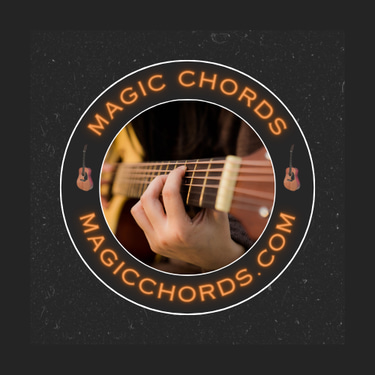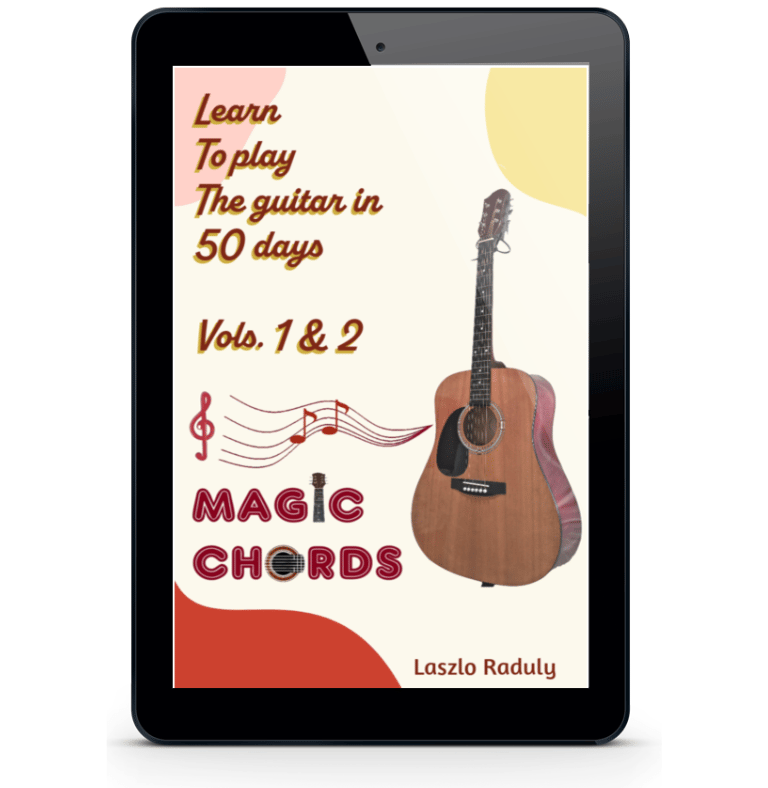
Master the A Minor Chord with This Simple Guide
Learn how to play the A minor chord with ease. This guide covers finger placement, tips, advices and tricks for mastering the A minor guitar chord quickly.
magicchords.com
7/26/2025
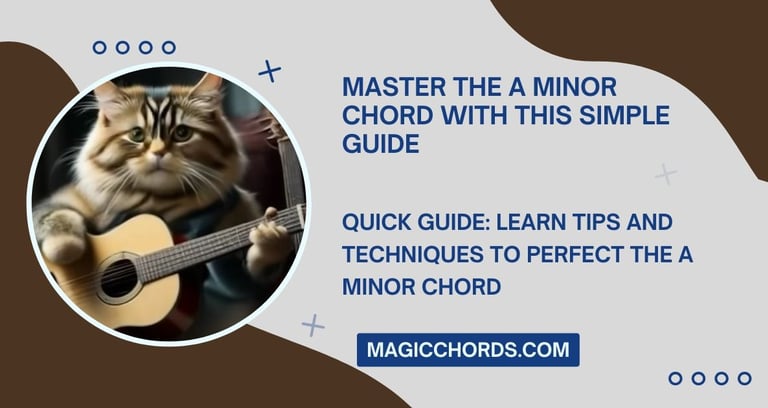

Master the A Minor chord with this simple guide designed for beginners. Learn the correct finger placement, strumming tips, and common mistakes to avoid.
The A minor chord is one of the most essential and expressive chords every beginner guitarist should learn. Its dark, moody sound makes it a favorite in a wide range of musical styles, from folk and pop to classical and rock. Mastering the A minor chord gives you a strong foundation for understanding chord shapes, finger positioning, and smooth transitions between other basic chords.
MASTER THE A MINOR GUITAR CHORD - CONTENT:
2. Understanding the A Minor Guitar Chord
3. A minor chord: Finger Placement Made Simple
4. Step-by-Step Guide to Playing A Minor guitar chord
5. Common Mistakes with the A minor chord and How to Avoid Them
6. Why A Minor is Essential for Beginners
7. Practicing A Minor chord: Tips for Quick Mastery
8. Strumming the A Minor Guitar Chord Like a Pro
In this guide, we’ll break down exactly how to play the A minor guitar chord in a clear, step-by-step format. Whether you’ve just picked up a guitar or are looking to strengthen your basics, this article will help you get comfortable with the chord quickly and correctly. You’ll learn the proper finger placement, which strings to press, which ones to leave open, and how to avoid common beginner mistakes like buzzing or muted notes.
The A minor chord is also a great starting point for learning songs, as it frequently appears in chord progressions alongside C, G, E, and D minor. With consistent practice and a bit of patience, you’ll soon be playing the A minor chord smoothly and confidently. Let’s dive in and add this must-know chord to your growing guitar skill set.
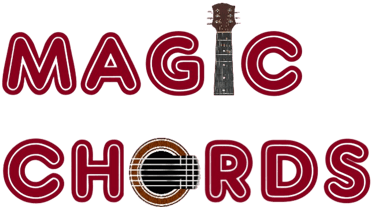

What is the A Minor Chord?
The A minor chord is a three-note chord that carries a soft, melancholic sound, commonly used in various musical genres such as folk, rock, classical, and pop. It consists of the notes A, C, and E. The note A serves as the root, C is the minor third, and E is the perfect fifth.
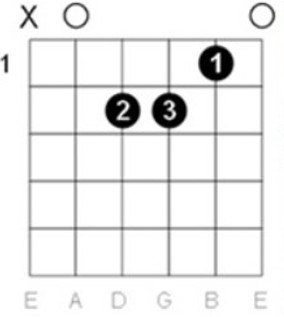

This combination creates the distinct emotional character of a minor chord. On the guitar, the A minor chord is simple to play and often one of the first chords beginners learn. Its structure makes it ideal for expressing mood and depth in a musical piece. The A minor chord often appears in chord progressions and serves as a gateway to understanding minor tonalities in music.
In an earlier article we presented the A major chord as well, highlighting its bright and uplifting sound often used in upbeat songs. Understanding both A major and A minor chords allows guitarists to explore contrasting emotions and build richer chord progressions. Learning the differences between the two helps develop musical versatility and deepens your understanding of harmony on the guitar.
Understanding the A Minor Guitar Chord
Understanding the A minor guitar chord is an important step for any beginner guitarist. This chord is not only foundational in terms of technique, but it also opens the door to expressing deeper emotions through music. The A minor chord consists of three notes: A as the root, C as the minor third, and E as the perfect fifth. Together, they create a somber and introspective sound that contrasts with the bright and open feel of major chords.
On the guitar, the A minor chord is relatively easy to play, making it ideal for those just starting out. It uses three fingers on the left hand and incorporates open strings, which helps build finger strength and coordination without overwhelming the player. Proper finger placement and a relaxed hand position are essential to ensure each string rings out clearly.
The A minor chord frequently appears in popular songs and is often used alongside other common chords like C major, G major, and E minor. Learning to transition smoothly between these chords builds the skills needed for rhythm playing and song accompaniment. By mastering the A minor guitar chord, players gain both technical ability and a new way to convey emotion through their music.


A minor chord: Finger Placement Made Simple
The A minor chord is one of the first chords guitarists learn, and for good reason. It’s simple to play, sounds rich and emotional, and helps build the foundation for understanding other minor chords. Mastering its finger placement early makes learning songs and progressing with the instrument much easier.
To play the A minor chord, begin by placing your index finger on the first fret of the second string, which is the B string. This note is a C, forming the minor third of the chord. Next, place your middle finger on the second fret of the fourth string, the D string. This gives you the E note, which is the perfect fifth. Finally, position your ring finger on the second fret of the third string, the G string. This is another A note, reinforcing the chord’s root. Make sure your fingers are curved and press firmly just behind the frets to ensure a clean sound.
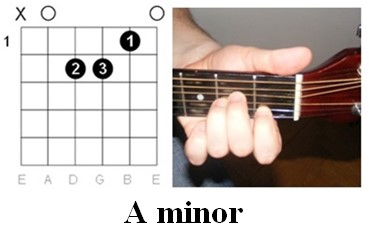

Only strum the bottom five strings, from the A string down to the high E string. The low E string should be muted or avoided, as it doesn’t belong to the standard voicing of the A minor chord. Open strings in this shape, like the A and high E, add resonance and depth. Practicing the A minor chord slowly and mindfully will improve your finger strength, placement accuracy, and overall sound quality. With time, it becomes a comfortable shape that naturally fits into many progressions. Clear finger placement is the key to making this chord ring out beautifully.
Step-by-Step Guide to Playing A Minor guitar chord
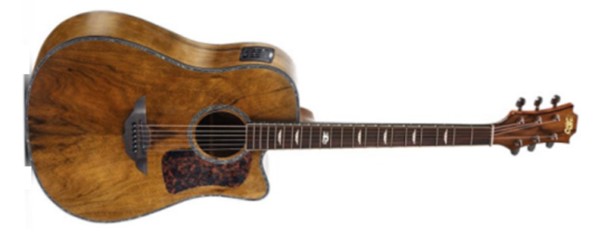

Learning to play the A minor guitar chord is a great starting point for beginners. It’s simple in structure, easy on the fingers, and widely used in many songs across genres. By following a few clear steps, you can master this essential chord quickly and confidently.
Begin by holding your guitar in a relaxed, comfortable position. Place your index finger on the first fret of the second string, known as the B string. This note is a C, forming the minor third of the chord. Next, place your middle finger on the second fret of the fourth string, the D string. This is an E note, which adds the perfect fifth. Finally, position your ring finger on the second fret of the third string, the G string, adding another A note, which is the root of the chord.
When strumming, be sure to play only the bottom five strings. Avoid the low E string at the top, as it doesn’t belong in this chord shape. Make sure your fingers are curved and your thumb rests comfortably behind the neck to allow clean, ringing notes.
Practice switching to and from the A minor chord with other basic chords. This builds your finger memory and helps you move smoothly between chords while playing songs. With regular practice and attention to technique, the A minor chord will become one of your most reliable tools for expressing emotion through music.
Common Mistakes with the A minor chord and How to Avoid Them
When learning the A minor chord, beginners often encounter a few common mistakes that can affect sound quality and playability. One frequent issue is improper finger placement. If your fingers are too flat or not close enough to the frets, the chord may buzz or produce muted tones. To fix this, make sure each finger is curved and pressing the string just behind the fret. Another common mistake is accidentally muting adjacent strings, especially with the index finger. Keep your fingers arched and your hand relaxed to avoid touching unwanted strings.


Strumming all six strings is also a typical error. The low E string should be avoided, as it isn’t part of the chord. Practice strumming from the A string downward. Lastly, pressing too hard or holding tension in your wrist can lead to fatigue. Stay relaxed and adjust finger pressure until the chord rings clearly without discomfort.
TIP 1: Learning an instrument later in life can be both rewarding and stimulating. Guitar Lessons for Seniors offer a gentle, encouraging approach tailored to mature learners. These lessons focus on flexibility, memory support, and stress relief. Whether playing for fun or personal growth, picking up the guitar at any age is a wonderful way to stay active and inspired.
Why A Minor is Essential for Beginners
A minor is an essential chord for beginners because it combines simplicity with emotional depth. It uses a basic finger shape that is easy to learn and helps build finger strength and coordination. This makes it ideal for developing fundamental guitar skills without overwhelming complexity. The chord appears in countless songs across many genres, so learning it opens the door to playing real music early in the learning process. Its sad and mellow sound also introduces players to the expressive qualities of minor chords, helping them understand musical mood and tone. Because A minor pairs well with many other beginner chords, it is often used in practice exercises and progressions. Mastering it early builds confidence and a strong musical foundation.
Short, frequent practice sessions are more effective than long, infrequent ones because they prevent fatigue and encourage gradual improvement. Staying relaxed and patient during practice is crucial, as tension can hinder finger movement. With regular, mindful practice, mastering the A minor chord becomes faster and more enjoyable.
Practicing A Minor chord: Tips for Quick Mastery
Practicing the A minor chord efficiently requires focus and consistent effort. Start by positioning your fingers carefully, ensuring they press firmly just behind the frets to produce clear sounds without buzzing. Take time to form the chord slowly, allowing your muscles to build memory and strength. Avoid rushing through changes; instead, practice switching between A minor and other basic chords like C major and E minor at a slow pace. Using a metronome can help maintain steady rhythm and improve timing. Strumming gently at first lets you hear each note clearly, helping you identify and fix muted or buzzing strings.


Short, frequent practice sessions are more effective than long, infrequent ones because they prevent fatigue and encourage gradual improvement. Staying relaxed and patient during practice is crucial, as tension can hinder finger movement. With regular, mindful practice, mastering the A minor chord becomes faster and more enjoyable.
Strumming the A Minor Guitar Chord Like a Pro
Strumming the A minor guitar chord like a pro involves more than just pressing the right fingers. It requires smooth, controlled strumming that brings out the chord’s emotional depth. Use a relaxed wrist and keep your strumming hand loose to create a natural rhythm. Focus on striking only the bottom five strings, avoiding the thick low E string to keep the sound clean. Experiment with different strumming patterns, mixing downstrokes and upstrokes to add dynamics and expression. Listening closely to how each string sounds will help you adjust your technique for clarity and fullness. Practicing with a metronome can improve your timing and consistency. With patience and attention to detail, your A minor strumming will sound polished and professional, enhancing any song you play.


TIP 2: Learn to play Come as You Are tabs by Nirvana and dive into one of the band’s most iconic riffs. This grunge classic features simple guitar patterns and a memorable melody, making it perfect for beginners. With a few basic chords and practice, you’ll be able to strum along confidently and add a legendary song to your growing guitar repertoire.
Transitioning to and from A Minor Smoothly
Transitioning to and from the A minor chord smoothly is essential for fluid guitar playing. The key is to develop muscle memory through consistent practice of chord changes. Start slowly by switching chords between A minor and common chords like C major, E major, or G major. Focus on keeping your fingers close to the fretboard and moving them efficiently to reduce unnecessary motion.
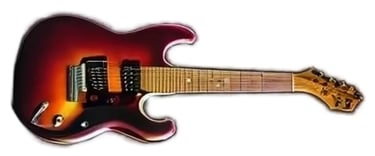

Preparing your fingers for the next chord before strumming helps minimize pauses and awkward gaps in your playing. Using slow, deliberate movements at first builds accuracy and confidence. Gradually increase your speed while maintaining clarity in each chord’s sound. Relaxation is important; tense hands can slow transitions and cause fatigue. Practicing chord progressions in the context of songs makes the process more enjoyable and practical. With time and patience, transitioning to and from A minor becomes smooth, natural, and seamless.
Songs That Use A Minor for Practice
Using popular songs to practice the A minor chord is a great way to make learning enjoyable and effective. Radioactive by Imagine Dragons is a powerful song that features the A minor chord within its chord progression. The song’s rhythmic strumming pattern and dynamic shifts provide an excellent opportunity to work on smooth chord transitions and timing. Practicing this track helps guitarists get comfortable with incorporating A minor into a modern rock context.


Another iconic song that uses the A minor chord is What’s Up by 4 Non Blondes. This classic tune combines a simple yet emotional progression that highlights the A minor chord’s expressive quality. Playing along with “What’s Up” allows beginners to experience how minor chords can add mood and depth to music. Both songs are accessible for players at various skill levels and offer practical ways to integrate A minor into real musical settings. Learning these tracks encourages consistent practice, builds confidence, and makes the process of mastering the A minor chord engaging and rewarding.
